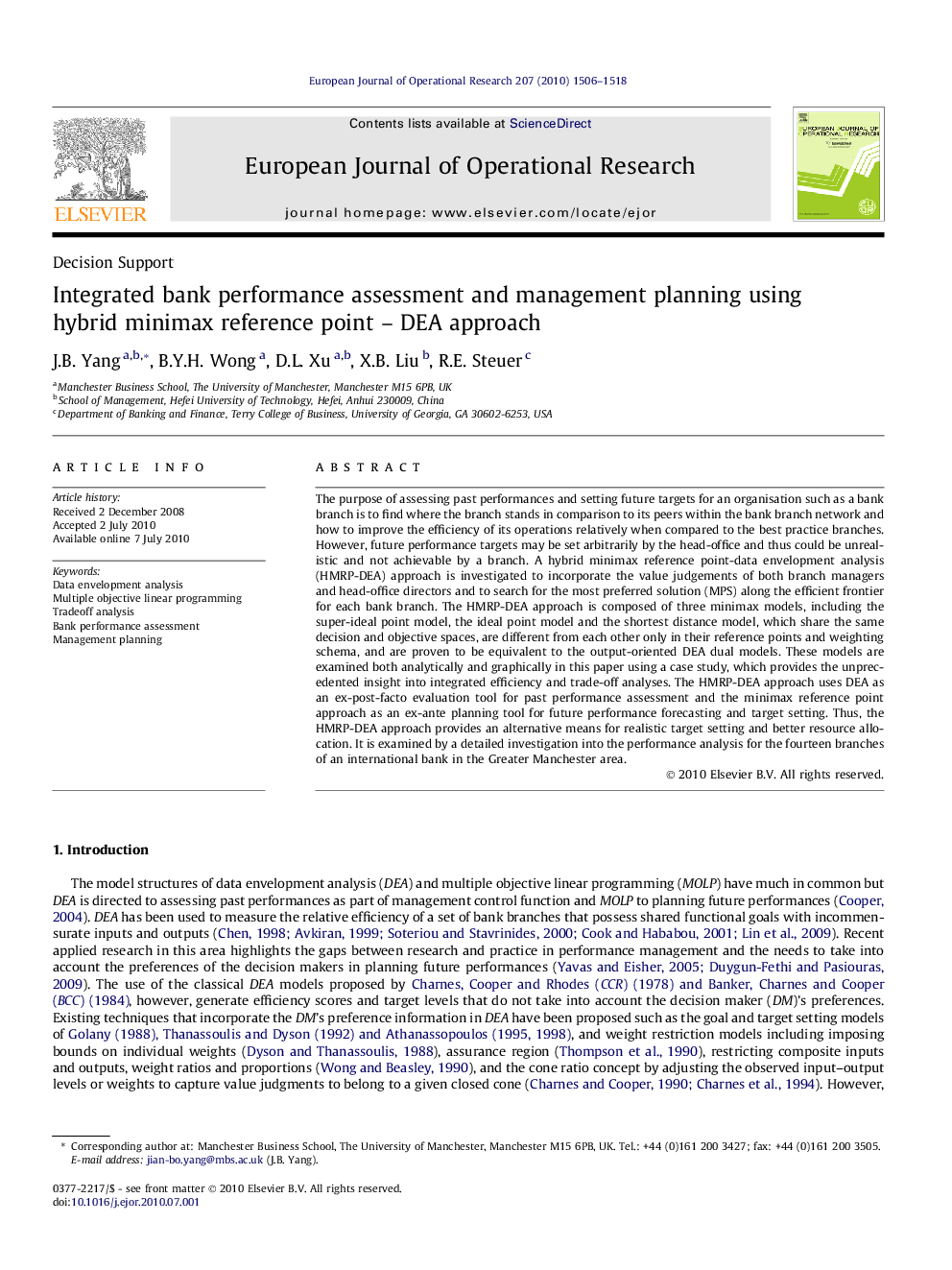| Article ID | Journal | Published Year | Pages | File Type |
|---|---|---|---|---|
| 6898792 | European Journal of Operational Research | 2010 | 13 Pages |
Abstract
The purpose of assessing past performances and setting future targets for an organisation such as a bank branch is to find where the branch stands in comparison to its peers within the bank branch network and how to improve the efficiency of its operations relatively when compared to the best practice branches. However, future performance targets may be set arbitrarily by the head-office and thus could be unrealistic and not achievable by a branch. A hybrid minimax reference point-data envelopment analysis (HMRP-DEA) approach is investigated to incorporate the value judgements of both branch managers and head-office directors and to search for the most preferred solution (MPS) along the efficient frontier for each bank branch. The HMRP-DEA approach is composed of three minimax models, including the super-ideal point model, the ideal point model and the shortest distance model, which share the same decision and objective spaces, are different from each other only in their reference points and weighting schema, and are proven to be equivalent to the output-oriented DEA dual models. These models are examined both analytically and graphically in this paper using a case study, which provides the unprecedented insight into integrated efficiency and trade-off analyses. The HMRP-DEA approach uses DEA as an ex-post-facto evaluation tool for past performance assessment and the minimax reference point approach as an ex-ante planning tool for future performance forecasting and target setting. Thus, the HMRP-DEA approach provides an alternative means for realistic target setting and better resource allocation. It is examined by a detailed investigation into the performance analysis for the fourteen branches of an international bank in the Greater Manchester area.
Keywords
Related Topics
Physical Sciences and Engineering
Computer Science
Computer Science (General)
Authors
J.B. Yang, B.Y.H. Wong, D.L. Xu, X.B. Liu, R.E. Steuer,
